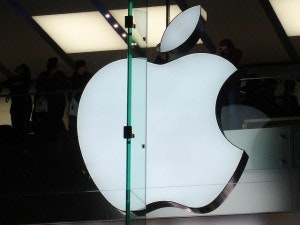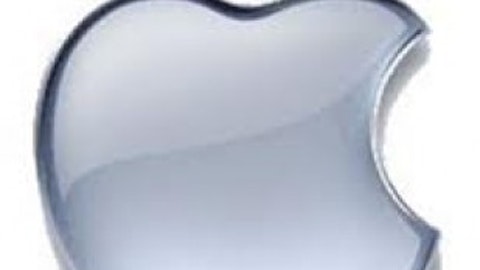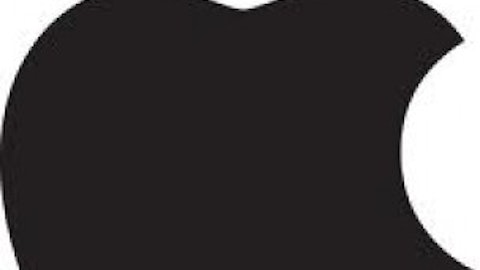
One of the most referenced quotes from CEO Tim Cook, however, came from the Q&A portion of Apple Inc. (NASDAQ:AAPL)’s earnings conference call. When asked whether he had any thoughts about potentially increasing the screen size of the iPhone from 4 inches, Cook replied:
My view continues to be that iPhone 5 has the absolute best display in the industry. And we always strive to create the very best display for our customers. And some customers value large screen size; others value also other factors such as resolution, color quality, white balance, brightness, reflectivity, screen longevity, power consumption, portability, compatibility with apps and many things. Our competitors had made some significant trade-offs in many of these areas in order to ship a larger display. We would not ship a larger-display iPhone while these trade-offs exist.
And by “competitors,” you can bet Cook was primarily referring to smartphone behemoth Samsung, with its wildly popular Galaxy series devices. Samsung’s upcoming Galaxy S4, for instance, boasts a huge 5-inch AMOLED screen, and its new Galaxy Mega will be available in ridiculously large 5.8-inch and 6.3-inch models.

Samsung Galaxy Phones, Image Source: Samsung.
Apple loves me, Apple loves me not …
Of course, Cook hasn’t exactly hidden his disdain for OLED; back in February at the Goldman Sachs Group, Inc. (NYSE:GS) Technology and Internet Conference, Cook railed on OLED displays, calling their color saturation “awful” and telling consumers they should “think twice before [they] depend on” them for accurate color.
Naturally, that spooked investors in Universal Display Corporation (NASDAQ:PANL) , the company whose technology enables nearly every OLED device on the market today. Even so, I noted that Cook’s comments seemed curious at the time, especially given that recent reports claimed Apple Inc. (NASDAQ:AAPL) had just hired a senior OLED technology expert away from one of its primary screen suppliers in LG Display Co Ltd. (ADR) (NYSE:LPL) .
Meanwhile, LG earlier this week reiterated plans to spend more than 50% of its total capital expenditures budget on OLED development. While the company will certainly need to improve its mass-production capabilities to support its impending launch of large-screen OLED televisions, that hasn’t stopped the rumor mill from wondering whether some of that capacity could be reserved for Apple Inc. (NASDAQ:AAPL).
After all, Cook also teased during the call of “a lot more surprises in the works,” and “potential exciting new product categories.”
So what does it all mean?
That brings me back to Cook’s comments about not changing the iPhone’s display until Apple Inc. (NASDAQ:AAPL) can be sure all the kinks are worked out.
Consider this: In answering that simple question about screen size, Cook brought up “resolution, color quality, white balance, brightness, reflectivity, screen longevity, power consumption, portability, [and] compatibility with apps.” While some of that could be chalked up to good old fashioned chest thumping, many would argue OLED might have the edge in several of these categories already.
The Galaxy S4, for instance, boasts a screen resolution of 1080 by 1920 pixels, good for a density of 441 pixels per inch. In comparison, the iPhone 5’s 4-inch display has a lower resolution at 1136 by 640 pixels, and lower pixel density of 326 ppi.
And while the iPhone’s LCD Retina display may currently have the edge in other categories like accurate color reproduction, brightness, and white balance, I can’t imagine Apple — with all its vast resources — would find it that difficult to make the necessary tweaks to an OLED screen. In addition, keep in mind that critics have hailed the 55-inch OLED TV from LG as possibly the most lifelike television ever, with its near-infinite contrast ratio, zero motion blur, wide viewing angles, and rich colors — and all at just 4 millimeters thin.

LG OLED Television, Image Source: LG.
If that weren’t enough, as I’ve noted before, OLED also allows device makers to create screens that can be flexible, transparent, and nearly indestructible.
Foolish final thoughts
If LG’s capex investments can solve the problem of supply, then, and if Apple Inc. (NASDAQ:AAPL)’s new OLED hire — who, incidentally, helped lead LG’s OLED TV effort — can translate these advantages into an Apple device, Tim Cook could easily step out and say, “Look! We’ve fixed everything I said was wrong with OLED displays. Behold our amazing new device.”
Mark my words, then: I’m going out on a limb to say at least one of Cook’s “surprises” will include the first ever Apple device to utilize an OLED display. When that happens, investors will see Apple Inc. (NASDAQ:AAPL)’s stock in a whole new light.
The article Does This Shed Light on Apple’s OLED Plans? originally appeared on Fool.com.
Fool contributor Steve Symington owns shares of Apple and Universal Display. The Motley Fool recommends Apple, Goldman Sachs, and Universal Display and owns shares of Apple and Universal Display.
Copyright © 1995 – 2013 The Motley Fool, LLC. All rights reserved. The Motley Fool has a disclosure policy.



